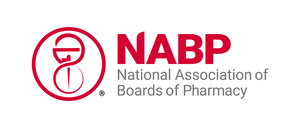Prescription Drug Supply Chain at Risk for Diversion Schemes and Counterfeit Drug Distribution, Reports NABP
Association's VAWD Program Continues to Help Protect the Integrity of US Drug Supply Chain
MOUNT PROSPECT, Ill., Oct. 9, 2013 /PRNewswire-USNewswire/ -- The National Association of Boards of Pharmacy® (NABP®) stressed, in a white paper released today, that closing vulnerable regulatory gaps is paramount in preventing counterfeit or diverted drugs from infiltrating the United States prescription drug supply chain. In "Wholesale Drug Distribution: Protecting the Integrity of the Nation's Prescription Drug Supply," NABP points to the roles of unscrupulous wholesalers in distributing counterfeit drugs and unapproved foreign-sourced drugs that have endangered patients across the country. To help safeguard the distribution chain, NABP has implemented updated criteria for the Association's Verified-Accredited Wholesale Distributors® (VAWD®) accreditation program, including revised criteria allowing virtual wholesale distributors to qualify for VAWD. Further, as noted in the white paper, the Association supports state efforts to strengthen and work toward uniformity in prescription drug distribution laws in order to eliminate the regulatory gaps that leave the supply chain susceptible to suspect wholesalers.
Citing cases of large-scale prescription drug diversion involving corrupt wholesalers and Medicaid fraud, as well as the distribution throughout the US of foreign-sourced, unapproved oncology products (Avastin® and Altuzan®) by two licensed wholesalers – all occurring in 2012 – the paper notes that the bad actors behind such schemes must be rooted out, or "patients will continue to be at risk." Further, while several states implemented pedigree requirements and other related regulations in the early 2000s, following an increase of counterfeit drugs in the supply chain, questionable distributors have since identified gaps in the regulatory structure that can be exploited, such as the "five percent rule" and emergency drug transfer provisions. As noted in the white paper, states may help address these issues by ensuring that out-of-state wholesale distributors seeking licensure are held to the same regulatory requirements as resident wholesalers, if not more stringent. Further, state boards of pharmacy are encouraged, in Resolution No. 109-2-13 adopted by NABP members during the Association's 109th Annual Meeting, to revise five percent rules to only allow the transfer of prescription drugs between pharmacies for the purpose of dispensing or administering, but not for resale, and to prohibit the transfer or sale of drugs from pharmacies to wholesalers for resale.
Two other loopholes used by rogue distributors are identified in the paper. Specifically, some rogue distributors hide suspect transactions by exploiting the complexity of the virtual distribution model where drugs may change hands several times, but not be in the physical possession of the distributor. Another scheme involves a pharmacy supplying shortage drugs to a wholesaler under the guise of an intracompany transfer. The distributor then hoards and later sells the drugs to pharmacies or other health care entities at exorbitant prices.
These types of schemes were addressed by the NABP Task Force on Virtual Manufacturers and Virtual Wholesale Distributors that met in December 2012. The task force reviewed the VAWD accreditation program criteria and recommended revisions to provide stronger assurance that drugs diverted from pharmacies and unlawful sources are prevented from entering into the supply chain. Among other revisions, VAWD criteria were added relating to pharmacies and distributors that are co-located, including requirements for audit trail records.
The VAWD program, launched in 2004, was developed by NABP and the state boards of pharmacy to help protect the public from counterfeit, adulterated, and substandard drugs, and the initiative received the support of Food and Drug Administration. Over 550 facilities across the country have become VAWD accredited. Of the 21 states that recognize VAWD, Indiana, North Dakota, and Wyoming require VAWD accreditation as a component of licensure. The role of VAWD in helping to protect US patients from counterfeit and substandard drugs has been highlighted by the Institute of Medicine, which, in a recent report on counterfeit drugs, recommended that all state boards of pharmacy should require VAWD accreditation as a requisite for licensure.
The white paper, "Wholesale Drug Distribution: Protecting the Integrity of the Nation's Prescription Drug Supply," (PDF) is available for download in the Members section of the NABP Web site at www.nabp.net/members/position-papers. For more information about the VAWD program and the updated VAWD criteria, visit www.nabp.net/programs/accreditation/vawd.
NABP is the independent, international, and impartial Association that assists its state member boards and jurisdictions in developing, implementing, and enforcing uniform standards for the purpose of protecting the public health.
SOURCE National Association of Boards of Pharmacy
WANT YOUR COMPANY'S NEWS FEATURED ON PRNEWSWIRE.COM?
Newsrooms &
Influencers
Digital Media
Outlets
Journalists
Opted In





Share this article